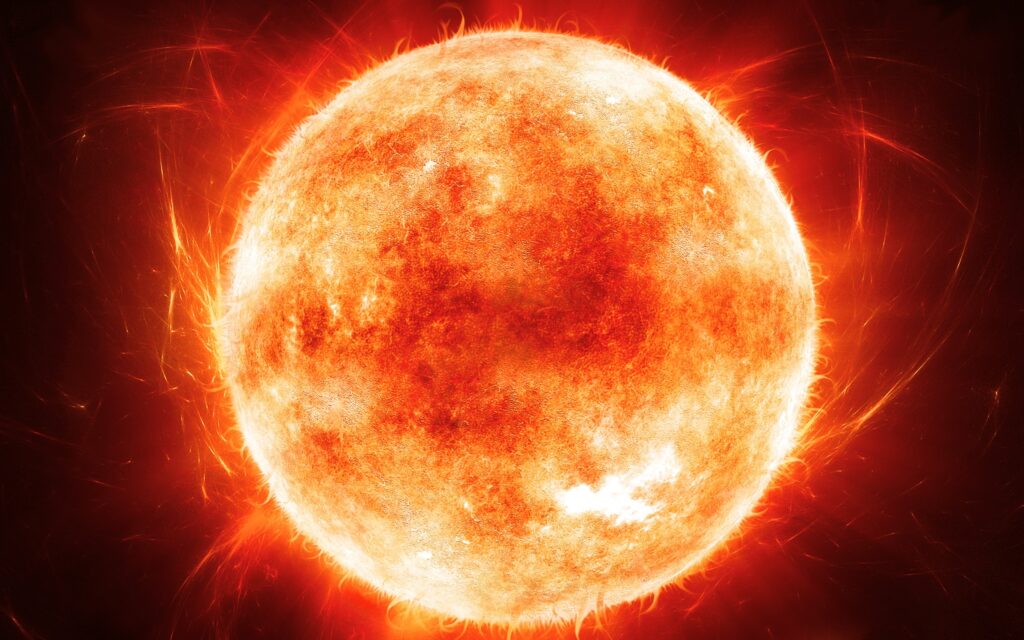We don’t need to worry about the sun ever dying; it’ll never get past the helium-burning stage. There is no immediate cause for alarm. The sun is on a life cycle and is currently in its middle age, known as the main sequence phase. It will continue to burn hydrogen for about another 5 billion years.
How can we be sure of this? Well, to find out how much time the sun has left, you need to know how old it is now.
Astronomers and geologists, by age-dating the solar system (by studying meteorites) give us an indication that the solar system is about 4.5 billion years old. So when you take that into account with the fact that the Sun will live for about 10 billion years, we know we’ve got 4.5–5.5 billion years of fuel left in the Sun.
It is evident that the sun is made mostly of hydrogen and helium inside its cores. The temperature and pressure are high enough for fusion reactions to take place that turn hydrogen nuclei into helium. During this transformation, a huge amount of energy is released, which travels outward and eventually escapes into space as light and other forms of electromagnetic radiation.
Inside the sun, the outward pressure of radiation from the core is opposed by the inward force of gravity due to the sun’s mass. For most of the sun’s life, these two forces have been in balance over time.
The amount of hydrogen in the core, which is the main fusion fuel, decreases only when the core hydrogen runs out. Gravity gains the upper hand for a while and squeezes the core harder, raising its temperature until it’s high enough for the fusion of helium into carbon to take place.
In such a case, when the sun runs out of fuel, its outer layers will expand to become a red giant before wafting away into space as a glowing nebula. The dead core would be left behind as a white dwarf similar in size to Earth. This process is natural for stars like our sun, and it’s a long-term cosmic event rather than an immediate concern.
As for solar storms, they occur when the sun emits huge bursts of energy in the form of solar flares and coronal mass ejections. This energy travels outward through a large space called the convection zone before reaching its surface, named the photosphere. These phenomena send a stream of electrical charges and magnetic fields toward the Earth at a speed of about 3 million miles per hour.
Scientists who study solar storms have discovered that the frequency of solar flares appears to follow an 11-year solar cycle. At times of peak activity, there could be several solar storms each day; at other times, there might be less than one solar storm per week.
Even though scientists expect the sun’s current activity cycle to result in a peak in solar storms this year, solar storms are a never-ending process, and they cannot lead to the sun’s cooling.

